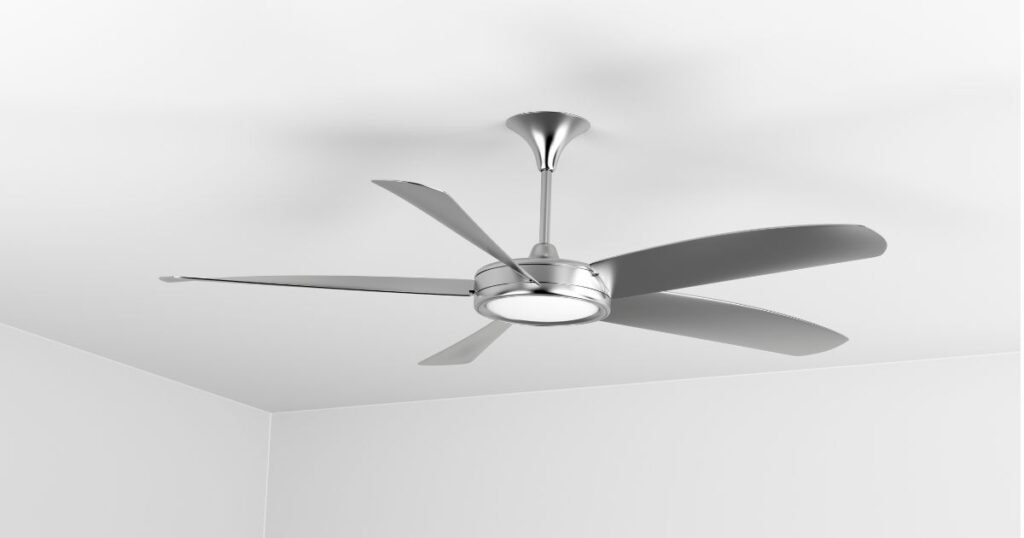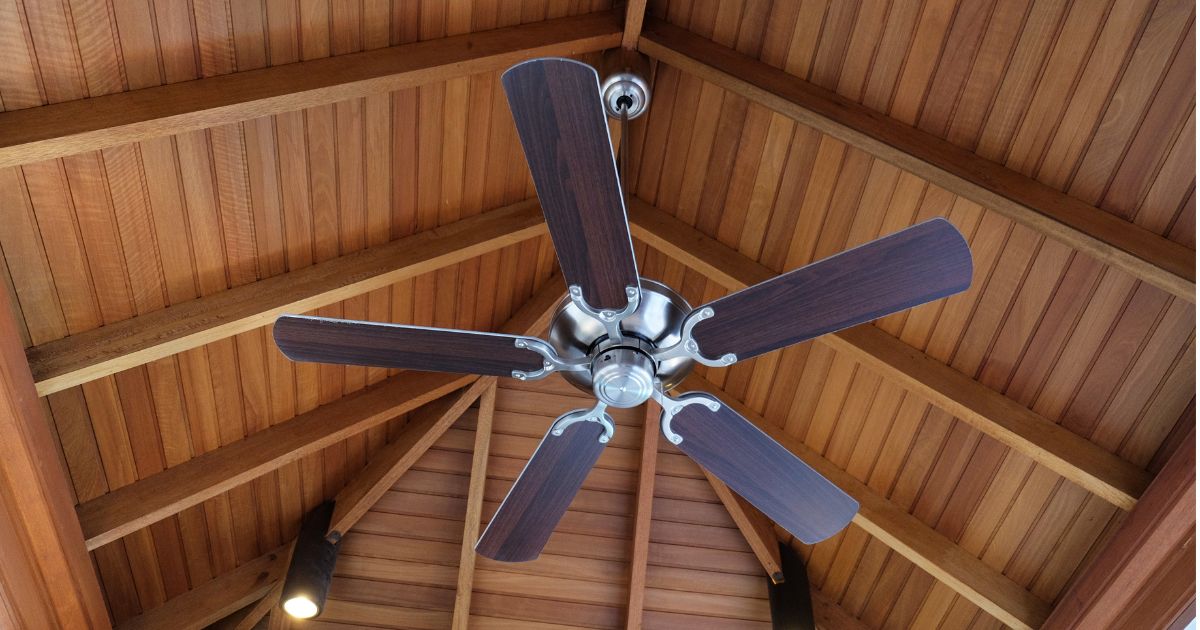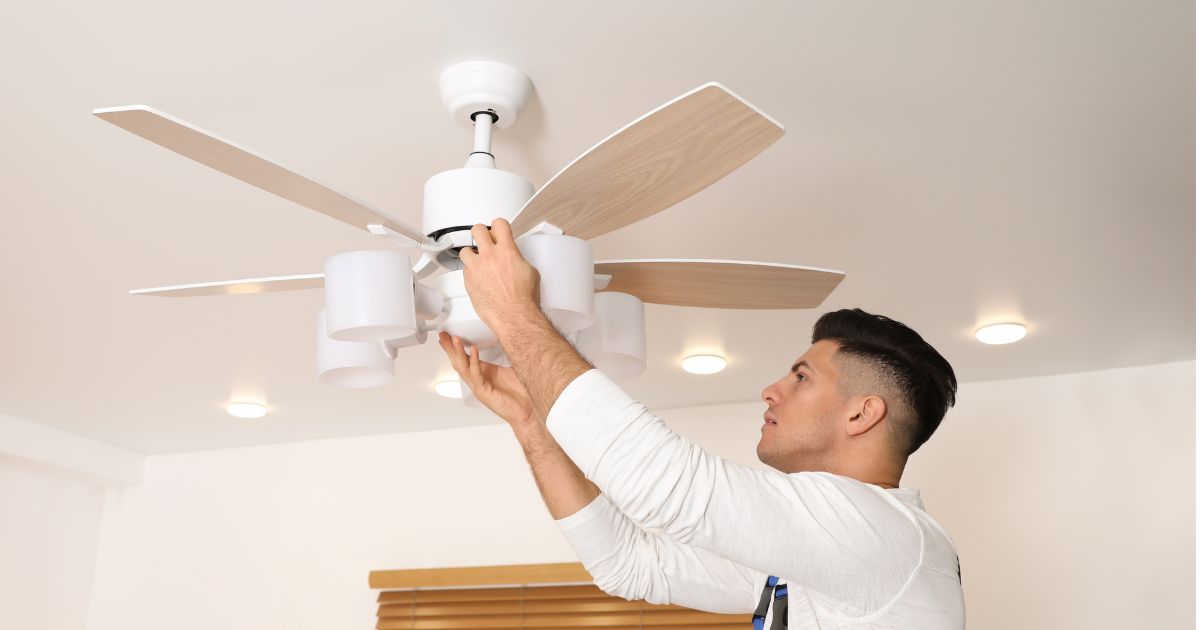Imagine a world where your ceiling fans know when you enter a room and spring to life automatically. Yes, this isn’t science fiction, it’s the wonder of smart fan automation based on room occupancy. These intelligent systems use sensors to detect your presence, adjusting fan speed and operation without you lifting a finger.
If I talk about automated ceiling fans benefits, they include energy savings, improved comfort, and hands-free convenience. To get started, you’ll need smart fans or retrofit kits, occupancy sensors, and a compatible smart hub to tie everything together.
But setting up your automated fan system requires careful steps and smart tricks. If you’re ready to know the details, let’s explore how to bring this smart technology into your home.
Understanding the Benefits
After a brief introduction, let’s know why automating your ceiling fans is a smart move:
- Energy Efficiency: Fans only run when someone is in the room, reducing unnecessary energy consumption.
- Comfort: The fan activates automatically when you enter, providing instant cooling.
- Convenience: No more hassle of switches or remotes – the fan responds to your presence.
- Cost Savings: Lower energy bills due to optimized fan usage.
Choosing the Right Equipment
Picking the right gear is key to making your smart fan system work well. Let’s look at what you’ll need to get started.
Smart Ceiling Fans
Look for fans that are compatible with smart home systems or have built-in occupancy sensors. Some models come with motion-sensing ceiling fans capabilities, which can be a great starting point for automation.
Occupancy Sensors
If your fan doesn’t have built-in sensing capabilities, you’ll need separate occupancy sensors. These can be:
- Passive Infrared (PIR) sensors
- Ultrasonic sensors
- Dual-technology sensors (combining PIR and ultrasonic)
Smart Hub or Controller
A central hub or controller will help integrate your fans and sensors into a cohesive system. Popular options include:
- SmartThings
- Home Assistant
- Apple HomeKit
- Amazon Alexa or Google Home devices (if your fan is compatible)
Setting Up Your Automated Fan System
Now that you have your equipment, it’s time to put it all together. Let’s walk through the steps to set up your automated fan system.
Step 1: Install Smart Ceiling Fans
If you’re replacing old fans, ensure the proper installation of your new smart fans. Follow the manufacturer’s instructions carefully, and don’t hesitate to hire a professional if you’re unsure about electrical work.
Step 2: Position Occupancy Sensors
Place sensors strategically to cover the entire room. Common locations include:
- Corners of the room
- Near entrances
- Above seating areas
Ensure there are no obstructions blocking the sensors’ field of view.
Step 3: Connect to Your Smart Hub
Follow your hub’s instructions to add both the fan and sensors to your smart home network. This usually involves:
- Putting the hub in pairing mode
- Activating the pairing function on your fan and sensors
- Confirming successful connection in your hub’s app or interface
Step 4: Create Automation Rules
Use your smart hub’s app or interface to set up automation rules. Here are some examples:
- Turn on the fan when occupancy is detected and the room temperature is above a certain threshold
- Adjust fan speed based on the number of people detected in the room
- Turn off the fan after a set period of inactivity
Step 5: Fine-tune and Test
Spend some time adjusting settings and testing your setup. Pay attention to:
- Sensor sensitivity
- Delay times for fan activation and deactivation
- Temperature thresholds
Advanced Tips for Optimal Performance
To get the most out of your automated fan system, consider these advanced strategies:
Integrate with Other Smart Devices
Combine your fan automation with other smart home elements:
- Thermostats: Coordinate fan operation with your HVAC system for optimal climate control
- Smart lights: Create scenes that adjust both lighting and fan settings simultaneously
- Voice assistants: Enable voice commands for manual overrides or status checks
Implement Scheduling
While occupancy sensing is the primary automation method, adding schedules can enhance efficiency:
- Set fans to run at lower speeds during typical sleeping hours
- Disable automation during times when the room is consistently unoccupied (e.g., work hours)
Use Geofencing
Use your smartphone’s location services to further automate your system:
- Activate “away” mode when all household members leave, ensuring fans don’t run in empty homes
- Prepare the house for your return by activating fans shortly before you arrive
Troubleshooting Common Issues
Even well-set-up systems can encounter problems. Here are solutions to common issues:
- False activations: Adjust sensor sensitivity or reposition sensors to avoid detecting movement outside the room
- Delayed response: Reduce the delay time in your automation rules for quicker fan activation
- Fan doesn’t turn off: Increase the inactivity period before shutdown or check for sensor obstructions
Maintaining Your Automated Fan System
To ensure long-term performance:
- Regularly clean fan blades and sensors to maintain efficiency and accuracy
- Update firmware for your smart devices when available
- Periodically review and adjust your automation rules as your needs change
Conclusion
Automating your ceiling fans based on room occupancy is a smart way to enhance comfort, save energy, and embrace the convenience of modern technology. By following this guide, you can transform your home into a more efficient and responsive environment. The key to a successful automated system lies in careful planning, proper installation, and ongoing adjustments to suit your lifestyle. With a little effort, you’ll soon enjoy the cool breeze of your smart fans, perfectly in sync with your presence and needs.




More Stories
Luxury Glassware for Yachts — Which Collections Are Worth Bringing On Board
Zoning Spaces Within a Single Room: Architectural Strategies for Spatial Clarity
Luxury Upgrades on a Budget: How to Achieve a High-End Look for Less